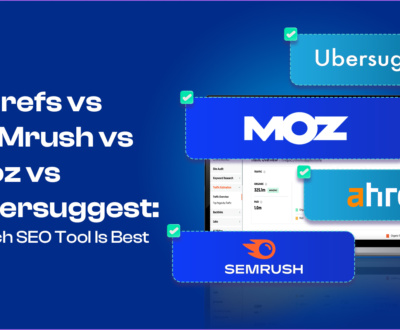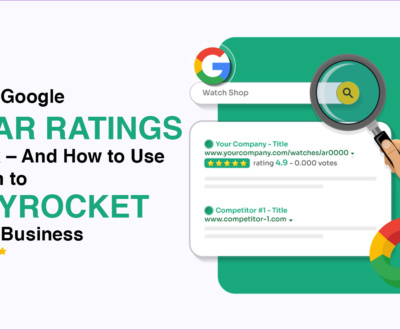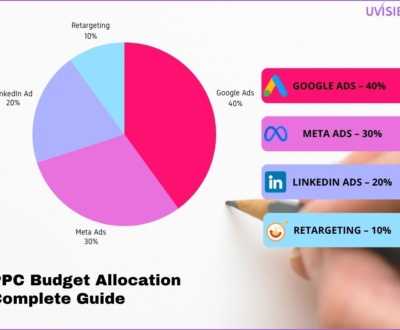Don’t think that the most challenging part is done by building a website! Because throwing some content, adding a few images, and you are done for the day will not work!
To increase your website’s traffic and visibility, you need to learn website design with SEO.
It’s not easy to fool a search engine like Google. They focus on Keywords, mobile-friendliness, speed, design, usability, structure, and user experience.
If you lack the above, your website will become a ghost for the audience. To avoid that, Start working with Website Design Services.
But don’t worry—you have landed at the right place. Here, you will find nine tips for SEO website design.
9 Tips For Web Design SEO
#1 Make Your Site Mobile-Friendly (Or Say Goodbye to Half Your Traffic)

Do you know that over 50% of web traffic comes from mobile, and if you do not make a mobile-responsive design, all those visitors will bounce off?
It will reflect poorly in the eyes of search engines and reduce your rankings!
Mobile-friendliness isn’t limited to “small screen compatibility.”
It means having a website that adjusts automatically and fits every screen size without zooming, pinching, or squinting.
Create a responsive web design to ensure every device gets a compatible website.
Hiring an agency that provides quality SEO services can be a smart choice for enhancing your website’s visibility and performance.
Google favors mobile-first versions of websites to rank high by prioritizing mobile.
Tip of the Day
Incorporate Google’s Mobile-Friendly Test tool to ensure seamless site performance on mobile.
This tool is free, quick, and gives you a clear idea of what to fix.
#2 Optimize Your Site’s Speed (or Watch Visitors Ghosting)

They say speed kills, but in the case of web responsiveness, lack of speed does!
According to a study, 53% of visitors will leave your site if it takes more than 3 seconds to load. With each second of loading, conversion rates drop.
Page speed is one of Google’s most crucial ranking factors and makes visitors happy.
So your speed can boost your competitor to rank higher!
To speed up the website-
- You can use tools like TinyPNG or JPEG-Optimizer to compress images
- You can reduce pictures, stylesheets, and scripts to minimize HTTP requests.
- Saved static files by enabling browser caching will load the website faster for returning visitors.
Fact: Once, Amazon lost $1.6 billion in annual sales because of a 1-second delay in loading. If this doesn’t scare you, what will?
#3 Keep Your URLs Simple and Clean (Simplicity is the Key)

If you have a cluttery URL, you are driving traffic away.
Messy URLs make Google crawlers unable to navigate through your website.
It also makes it challenging for users to remember your site. A clean URL will tell what your site is all about!
You identify which of these two URLs is better-
- `example.com/blog/seo-tips` (Good!)
- `example.com/page?id=12345` (Bad!)
Factors that make a URL SEO-friendly are-
- Be precise
- Do not add unnecessary characters and numbers
- Add relevant keywords. However, do not stuff.
So, if you want to design an SEO-friendly Website, ensure the URL is clean and precise.
Also Read – Turn Clicks Into Cash: 6 Web Design Hacks to Boost Sales!
Tip of the Day!
If you can’t tell what your site is about from its URL, how will search engines or users?
#4 Focus on User Experience (UX) (Because First Impressions is Last)

If you don’t want your site to go down like Niagra Falls, focus on user experience.
Because if users do not find what they are looking for, they will leave.
It will increase your site’s bounce rate and inform Google that your site could not be more helpful.
To improve UX:
- Ensure simple navigation for visitors to find what they are looking for.
- Write content with clear fonts so that visitors don’t struggle to read.
- Add clear Call-to-Actions (CTAs)
Fact: Websites with smooth UX have 400% higher conversion rates. So, pay attention to the power of intuitive user experience!
#5 Use SEO-Optimized Images and Alt Text (Search Engines’s Eyes)

Google does not see images as you do. They navigate images through alt text.
Images make the website more enjoyable and increase engagement; however, if they are not optimized, they may slow down your site.
Image optimization is an important aspect that should not be overlooked.
To optimize images:
- Compress images to optimal levels to reduce load time.
- Include alt images such as woman-running-in-blue-sneakers.jpg.
- Alt text increases the site’s accessibility by helping visually impaired users.
Tip of the Day!
Add descriptive keywords in the alt text, but do not overdo it.
#6 Create High-Quality Content with Keywords (Say Goodbye to Keyword Stuffing)

Quality content is the key to SEO.
Google is designed to provide relevant information to users.
Ensure you put quality-rich content that addresses user queries on your site.
You can create SEO-optimized content using the following tips-
- Using tools like Keyword Planner or Ahrefs will help you find relevant keywords.
- Avoid keyword stuffing, as Google might penalize you for that.
- Provide content that adds value and engages people to stay longer- the most critical indicator for high rank!
Fact—If you want to see high ROI, invest in quality content. A site with valuable content sees 13 times more favorable ROI.
#7 Organize with Headers and Proper Tags (Structure is Essential!)

Reading a page without any headings or breaks is painful, right?
By using headers (like H1, H2, H3), you can organize content for easy crawling.
It will help search engines and users navigate through your page’s structure.
Use headers like this:
- H1: Main title of the page
- H2s and H3s: Break down topics within the page as required
#8 Add Internal Links (Guide Users—and Google—Around Your Site)

If you need a roadmap for a new destination, so do Google and users for your website.
Internal links are the best way to navigate users and Google around your site.
They distribute links or ranking authority throughout your site, making it easier for search engines to index your pages.
For instance, if you discuss SEO audits in one blog post, you can internally link that to your blog’s SEO audit services page!
Internal links:
- It will improve site navigation and help users find what they want.
- It will help search engines crawl and index your site.
Fact: A site that internally links pages systematically sees a 30% increase in page views. Be witty while linking sites to improve your SEO!
#9 Include an XML Sitemap (Clear Roadmap for Search Engines)

Do you like shortcuts? So does Google! XML sitemap is a shortcut for search engines.
It is a sheet that lists all your website’s pages, making it easy for search engines and users to find and index them.
If your site is new or complicated to navigate, ensure an XML sitemap.
Website platforms like WordPress generate XML sitemaps.
Submit to Google Search Console, and Google will index those pages more effectively.
Tip of the Day!
Ensure you update your sitemap every time you add, update, or delete pages. This keeps search engines updated and indexes your most current content.
Final Thoughts!
Are you just ticking the boxes while building an SEO-friendly web design?
Well, it’s not just about that; it’s about creating a site that both search engines and users want!
Follow the tips above to create a website with a quality reach that is faster and easier to navigate.
To recap:
- Ensure that the mobile-first design is prioritized and the loading is faster.
- Use a simple URL, clear alt text, and headers.
- Don’t overstuff keywords!
- Add internal links and XML sitemap.
SEO-friendly web design isn’t one-time work; it requires continuous improvements to make the site better and valuable for both Google and users.
Start working with Website Design Services for better rankings, more visitors, and a genuinely working website.
About us and this blog
We are a digital marketing company with a focus on helping our customers achieve great results across several key areas.
Request a free quote
We offer professional SEO services that help websites increase their organic search score drastically in order to compete for the highest rankings even when it comes to highly competitive keywords.









Pingback: Stop Losing Leads: 5 Killer Website Design Hacks That Actually Convert
Pingback: Overcoming Real Estate SEO Challenges: A Winning Strategy for Agents and Brokers